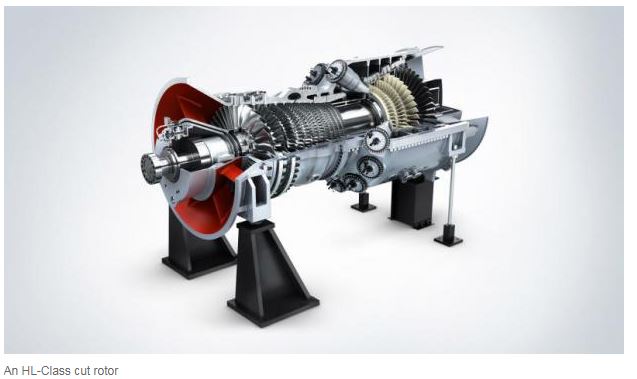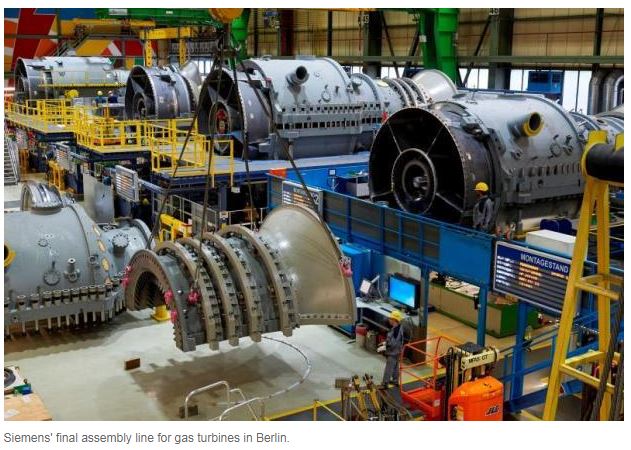Thailand: Siemens still high on natural gas
While coal is highly controversial and it will take a while before batteries capable of storing energy from renewables come into play, natural gas remains readily available, reliable and burns relatively “clean”.
The fuel is expected to maintain or even increase its share in conventional gas-based power generation in the years to come as technologies continue to improve.
Siemens, the Germany-based global technology powerhouse and a major supplier of gas turbines, unveiled last year advanced air-cooled gas turbines.
Thomas Hagedorn, executive vice-president and head of sales Asia-Pacific for the power and gas division, said gas-fired power plants gained a firm footing in the market in the 1970s. While acknowledging the age of renewable energy is arriving, with wind and solar energy technologies being industrialised to achieve economies of scale, he said data gathered by Siemens and outside sources indicate gas will play an expanding role in power generation.
Based on such data, during 2017-2040 conventional power generation will continue to dominate the market with a shift from coal to gas.
“In the 1950s [when we were] developing gas turbines for power generation, people thought ‘these guys were crazy and we have cheaper nuclear power.’ It’s completely different nowadays,” he said during a presentation in Berlin earlier this month.
Supporting the energy transition
Siemens’ power and gas division has touted the company’s HL-Class technology, calling it an “enabler” for the smart-energy transition to a sustainable power regime.
Evolved from the proven technology of its flagship H-Class, which has a net efficiency of 61.5% and is a market success, the new HL-class is expected to perform better and prepare gas-fire power plants for meeting the challenge of renewables, which are hard to predict and unreliable.
The heavy-duty engines boasts two key features — efficiency and flexibility.
The HL-Class gas turbines have an efficiency of over 63% in a combined cycle operation, with an ambitious plan to achieve efficiency of 65% over the medium term, the company said. In terms of flexibility, the engines provide a simple cycle ramp-up of 85MW per minute to respond to demand loads — whether to satisfy base load requirements or to serve as a backup for renewable power systems.
In terms of flexibility, the engines provide a simple cycle ramp-up of 85MW per minute to respond to demand loads — whether to satisfy base load requirements or to serve as a backup for renewable power systems.
Mr Hagedorn said several factors must be taken into consideration when offering power generation solutions to partners or customers. In Southeast Asia, affordability is among the top priorities that include security, reliability and sustainability.
Higher efficiency means more affordability, he said.
“When we look at projects, we need to find solutions for all of these things. The gas turbine is one thing and it is a very important thing,” said Mr Hagedorn.
Evolving technologies
Kolja Schwarz, head of portfolio management for HL-Class, said the technology development has specifically targeted engine performance.
The key technologies featured by HL-Class include advanced combustion systems for higher firing temperatures, innovative multilayer coating for better blade robustness, ultra-efficient internal cooling features for blades and vanes for less cooling-air consumption.
He said that best 3D blade design, advanced combustion system and less cooling air work together, resulting in better engine performance.
“The less cooling you need, the more efficiently the engines operate. You go for high temperatures in the combustion system, and you go for the highest efficiency in the blades,” he said.
“We have all the knowledge we gained from the H-Class and previous experiences, combining [them] with the most developed technology. It’s not something we invented last year. It’s something we’ve evaluated and tested for quite some time,” said Mr Schwarz.
While pinpointing the time period for the HL-Class development is a bit tricky, the P&G team said it would be less than for the H-Class.
Enabling higher speed and flexibility
Additive manufacturing, better known as 3D printing, has opened up possibilities for new designs and allowed prototype parts to be manufactured and tested more quickly.
Siemens claims to be the front-runner in applying additive manufacturing in its power generation section and has used the technology to make hot rotating parts and burner components for use in gas turbines.
“With 3D printing, the testing campaign was much shorter,” said Mr Hagedorn.
Testing and validation
After a series of extensive trials for components and prototypes, the HL-Class technology will be tested in real field conditions at Duke Energy’s Lincoln County site in North Carolina.
Preparations at the site have just begun and the testing will take place on the grid, said Mr Schwarz, who described this as a “unique opportunity” for Siemens, which has four years to test and validate its HL-Class technology.
The trial is divided into phases and starts with very detailed testing, whereby more than 6,000 sensors are attached to the engines for monitoring.
Next is the first phase under which the engine will operate for 300 hours to test the extremes of the engine. The validation mode will take 3,000-4,000 hours of operations to see how the engine behaves in normal conditions.
“For the first four years we design [in line with how] we’d like to operate and tie that to our testing needs. [Then] we hand things over and they operate,” said Mr Schwarz said, adding that Siemens is in negotiations with other customers for the HL-Class technology.
Analytics support for optimised performance
The HL-Class turbines will also be connected to Siemens’ Power Diagnostic Centre for monitoring and analytics support.
More than 530 gas turbines and over 130 steam turbines are monitored with 316,000 sensors transmitting data daily.
The data is monitored to detect deviations in machine behaviour to reduce downtimes and help with shorter outages for the operators.
The engines are also designed to support Advisor Suite, powered by MindSphere, the company’s cloud-based solutions, along with other digital services.
“What is new here is that we not only collect data from our monitoring centres in Germany or the US for analysis. We have smart algorithms that automatically analyse this data and then give advice,” said Mr Hagedorn.
“That’s different from collecting data, looking at the graphs and making adjustments.”
Upgrade potentials for existing customers
With the HL-Class technology in the picture, Siemens intends to exploit the new development to help the current operators of SGT-8000H series get better performances out of their engines.
Mr Schwarz said the development of HL-Class means the operators of Siemens gas turbines will upgrade their potential.
“We’ll also bring the new technology back to our fleet … we will bring the knowledge of this technology back to the SGT8000. There is the potential for upgrades. We can better support [engine] performance,” he said.
Source: https://www.bangkokpost.com/business/news/1470429/siemens-still-high-on-natural-gas


 Thailand
Thailand




